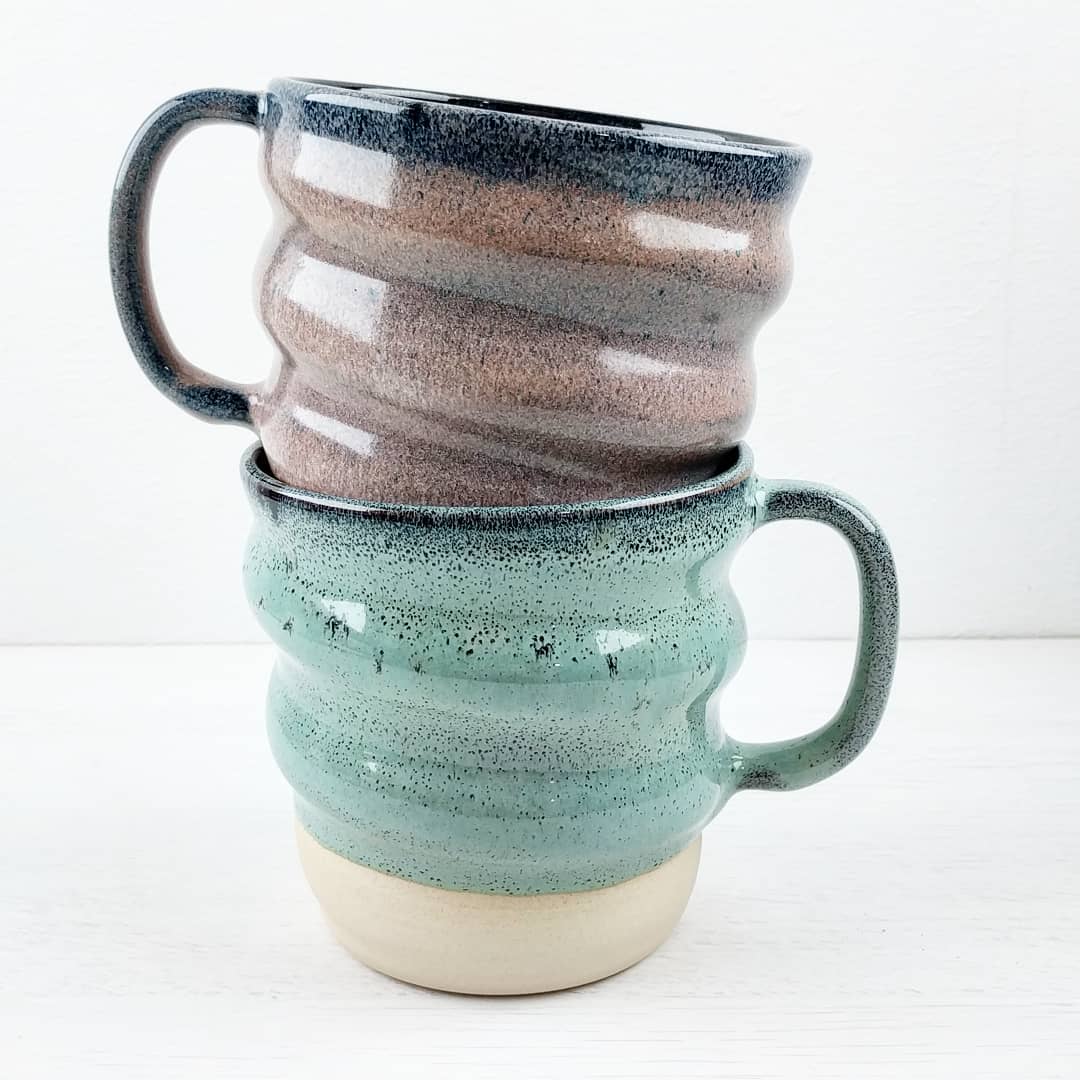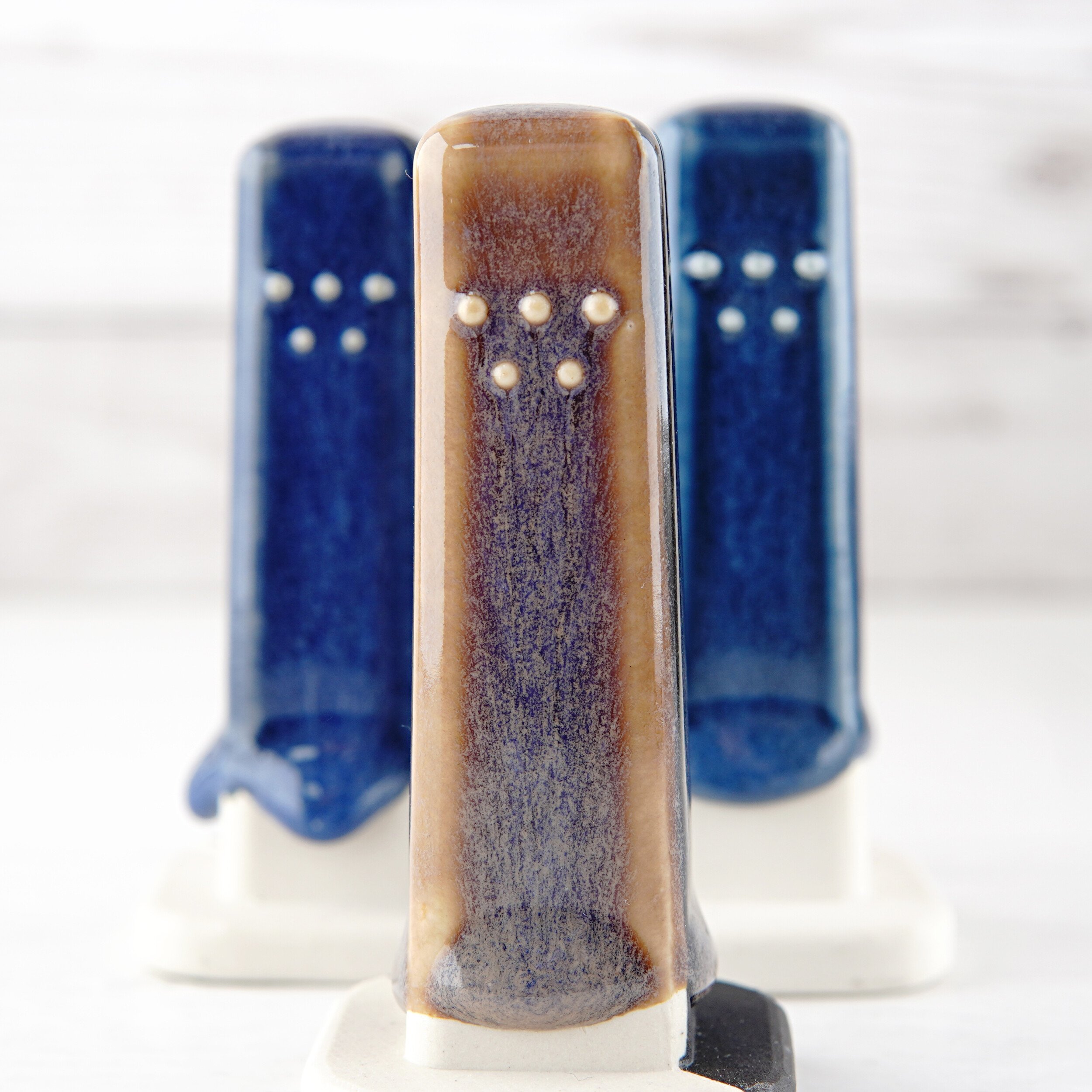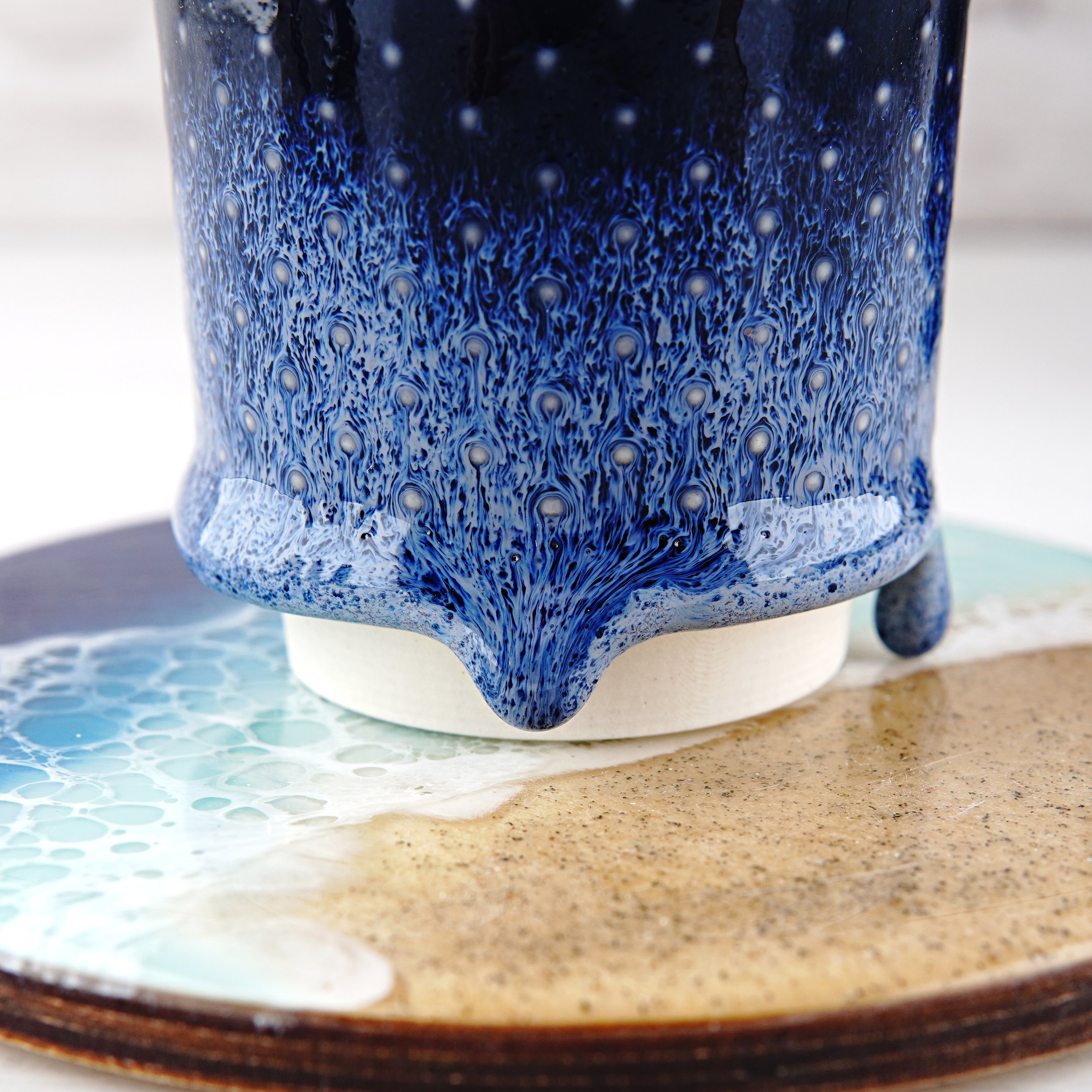How Much Do Glazes Cost To Make?
I made this glaze pricing spreadsheet to go with the FirstFive glazes, and wanted to make a quick post to expand on it.
What are Glazes?
Glazes are thin surface coatings, in ceramics they’re a special glass that provides a durable and waterproof layer over the clay. In their unfired state, they’re made of a specific combination of powdered rocks, minerals, frits (manmade powders with specific chemistry) and metal oxides.
I won’t attempt to go into what all the powdered ingredients do and why (if you want to know, I highly recommend the CMW courses), but there are multiple categories that do broadly the same thing and are somewhat interchangeable.
Even though some materials make little difference to end result, the price of glaze materials is only related to the difficulty of getting them to you in a usable form, so there can be huge price differences within categories.
Cherry Bluessom - £14.50/kg
Factors That Go Into Material Costs
Demand - There are some ingredients (like cobalt and lithium) which get used in glazes but are also in high demand by other industries. There is a good incentive to find and extract deposits, but the price will be set by the market.
Scarcity - Some ingredients are abundant and readily available. Many are only found in a handful of locations. This can dramatically affect the price.
Processing - Some ingredients are found in the format they’re needed, others need to be processed and refined to remove impurities
Shipping - This is a huge part of the cost, often more than the material value itself. Glaze materials are heavy and bulky, so even if the ingredient was offered to you for free, if you’re shipping it on a long and complicated journey then the price will be high regardless. This means that ingredients can be cheap in the country they’re sourced and prohibitively expensive in another (e.g. grolleg is cheap in the UK and pricey in the states)
Supplier - Different suppliers will price ingredients differently for a wide range of reasons (source quality, their economy of scale, their packaging costs, factoring shipping costs in, etc).
Quantity - There is usually a significant price difference between ordering a small amount (as low as 25g for some stains) and ordering a whole 25kg bag. You’ll pay a lot more per kilo if you buy less at once, but that doesn’t mean it’s not a sensible idea.
Misty Sunrise - £5/kg
How Do Glaze Recipes Work?
Typically, glaze recipes are in two parts. There’s a base glaze that adds up to 100%, then there are additional ingredients (typically colourants) added that take the total over 100%.
When mixing a glaze up, you multiply the percentage by the total amount of base you want. If a recipe calls for 30% silica and you want to mix up a kilo, you’d need 300g (30% of 1000g).
It’s a slightly simplistic view of glaze chemistry (the colourants will affect the behaviour as well as the colour, so keeping a consistent base and changing colourants will still result in each glaze behaving differently), but very useful from a neatness point of view. The base ingredients tend to be added in the 5-50% range, where colourants are in the 0.1-10% range. Keeping them separate allows for very nicely rounded base recipes. Sometimes you will see the colourants included in the base, and this is chemically more sensible.
The total adding up to more than 100% means that it’s harder to just compare total prices, as in some cases you’ll have significantly more material per kilo of base mix. I added the functionality in the spreadsheet to compensate for this and compare like to like.
Misty Morning - £8.50/kg
Prices
I added my prices to the spreadsheet. You’ll need to change that to your local prices (if you’re not in the UK), as they’ll vary significantly.
But using mine as an example, you can see at the low end I can get Whiting for around £1/kg (at the moment, but undoubtedly going up) and the most expensive is Cobalt Carbonate at £170/kg. That gives a sense at to how much some ingredients can change the price relative to others.
Looking at just the base ingredients, it’s between £1-2/kg for everything other than the frit, which is at £16/kg. Frits are a very useful way to get a glaze to melt at cone 6, but they’re typically far more expensive than any other ingredient (higher processing costs, and the Ferro Frit are imported from the US).
Glazes that use a lot of frit will be more expensive than those that don’t. Cone 10 recipes will be much cheaper for this reason, as they don’t need the added boron to melt at the higher temperatures, but the higher temperatures require more energy to reach.
There isn’t usually much you can do about the price of a recipe. Sometimes you can change ingredient selection to keep costs down, but most changes will affect glaze behaviour and might not give the same result you started with. For example, reducing boron levels will make a glaze much cheaper but won’t give the same melt and flowing qualities (like in Floating Blues).
The main thing is to be aware that there is a huge range of material costs, and that some things will affect the price far more than others. If you want to keep costs down, you’ll want to avoid recipes with high amounts of cobalt or tin. It might rule certain colours or effects out, but there are plenty of other (cheaper) options!
Floating Iron+Chrome - £5.70/kg - No cobalt, but blue without the cost!
Converting To Volume
These are prices per kilo of glaze mix, but if you’re using premade glazes you might be more used to price per ml. There is no direct equivalent as it will depend how much water you add. But a general rule of thumb would be to assume a specific gravity of around 1.45 with around 90-100% added water (so 900-1000g water added per 1000g of glaze powder). This means a kilo of glaze mix will produce around 1.4 litres of glaze (2kg (glaze + water) / 1.45 = 1.38), and the prices will be around 3/4 per litre as per kilo (so £10/kilo equates to around £7.50/litre)
Floating Chrome - £5.6/kg
If you like this sort of content and want to support the creation of more, I now have a Patreon specifically for it or a page on my website if you just want to make a single donation.











